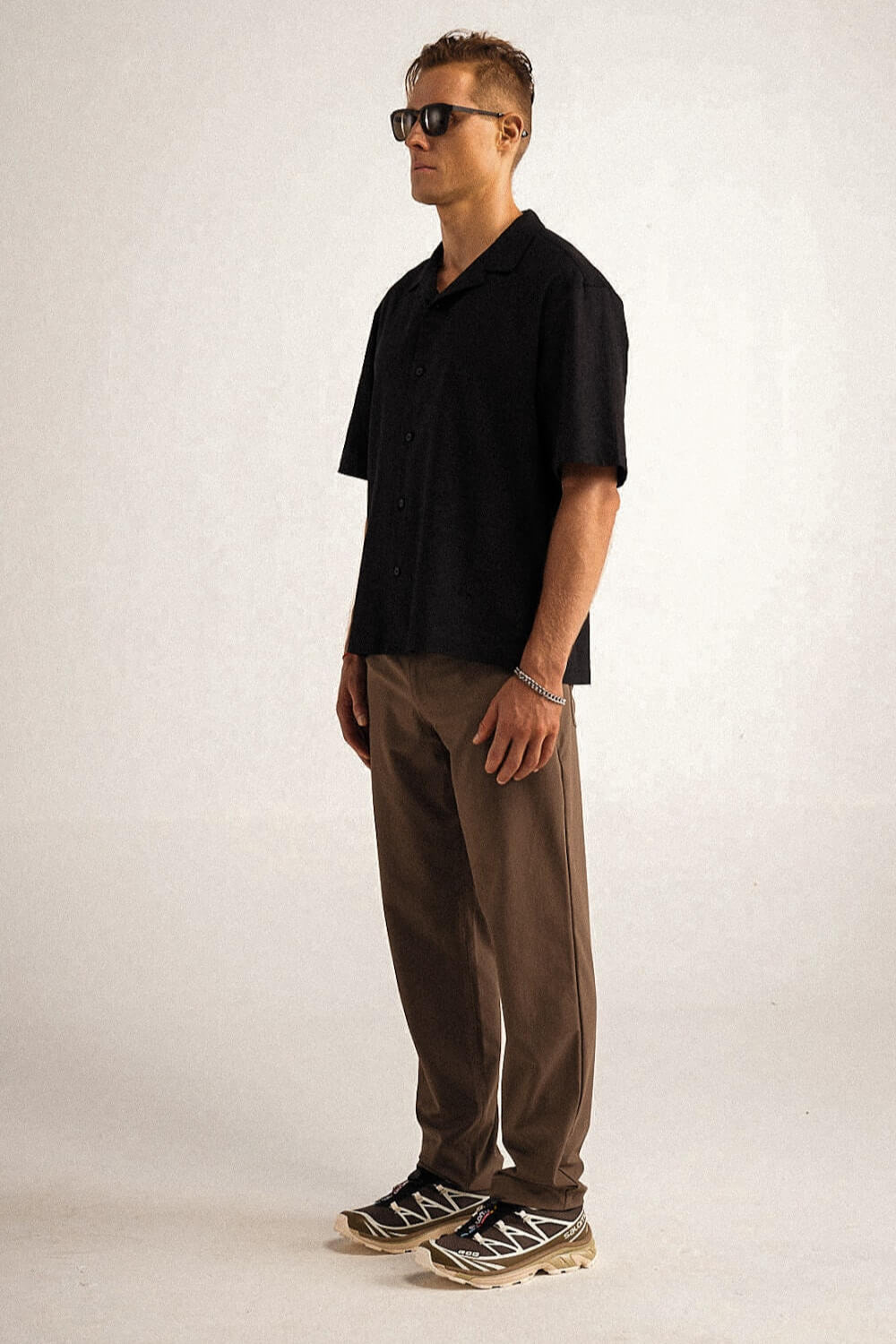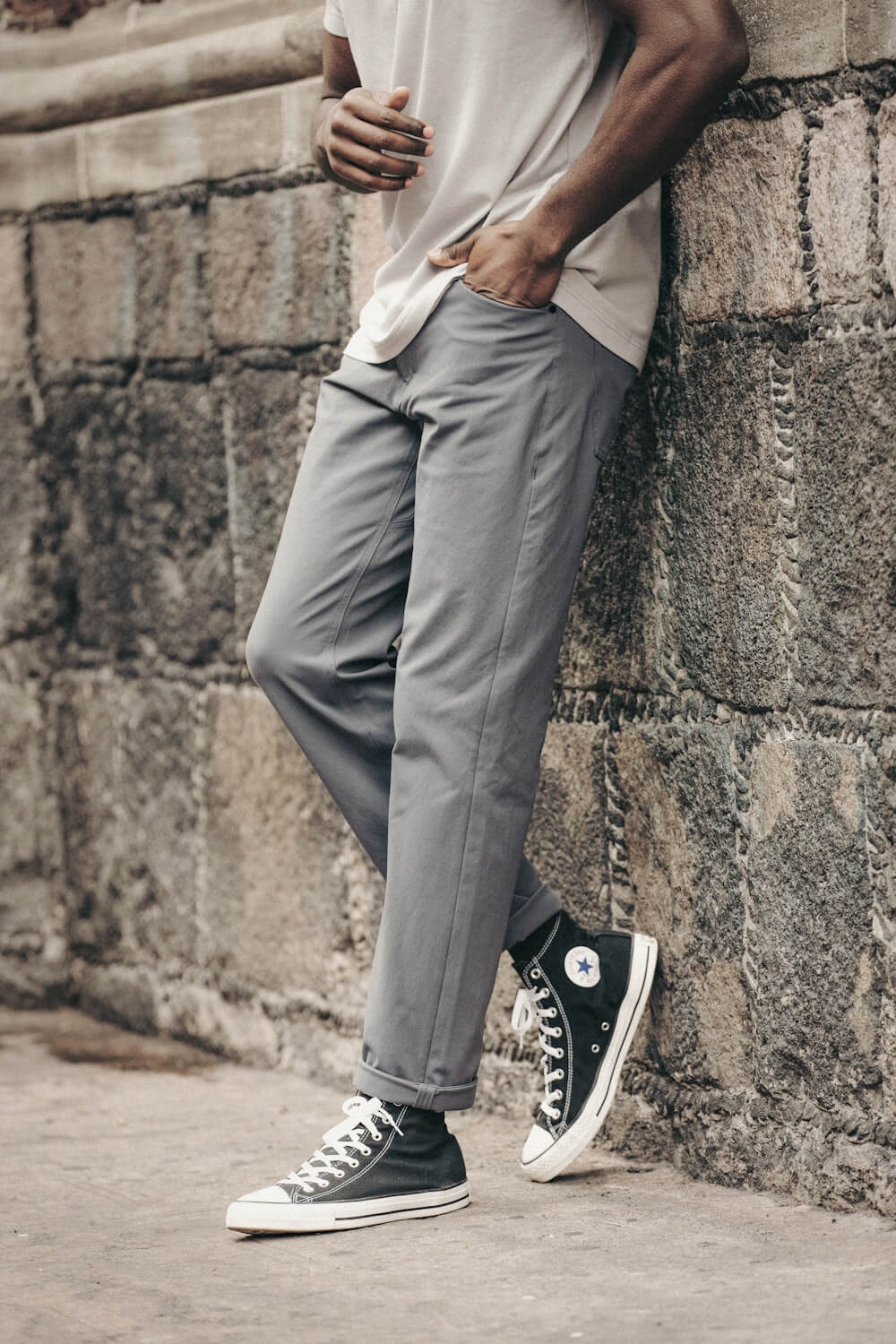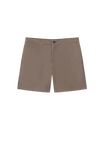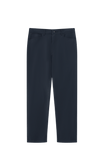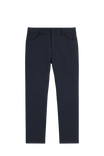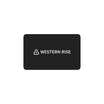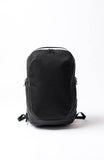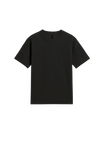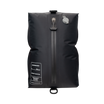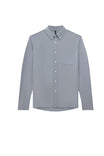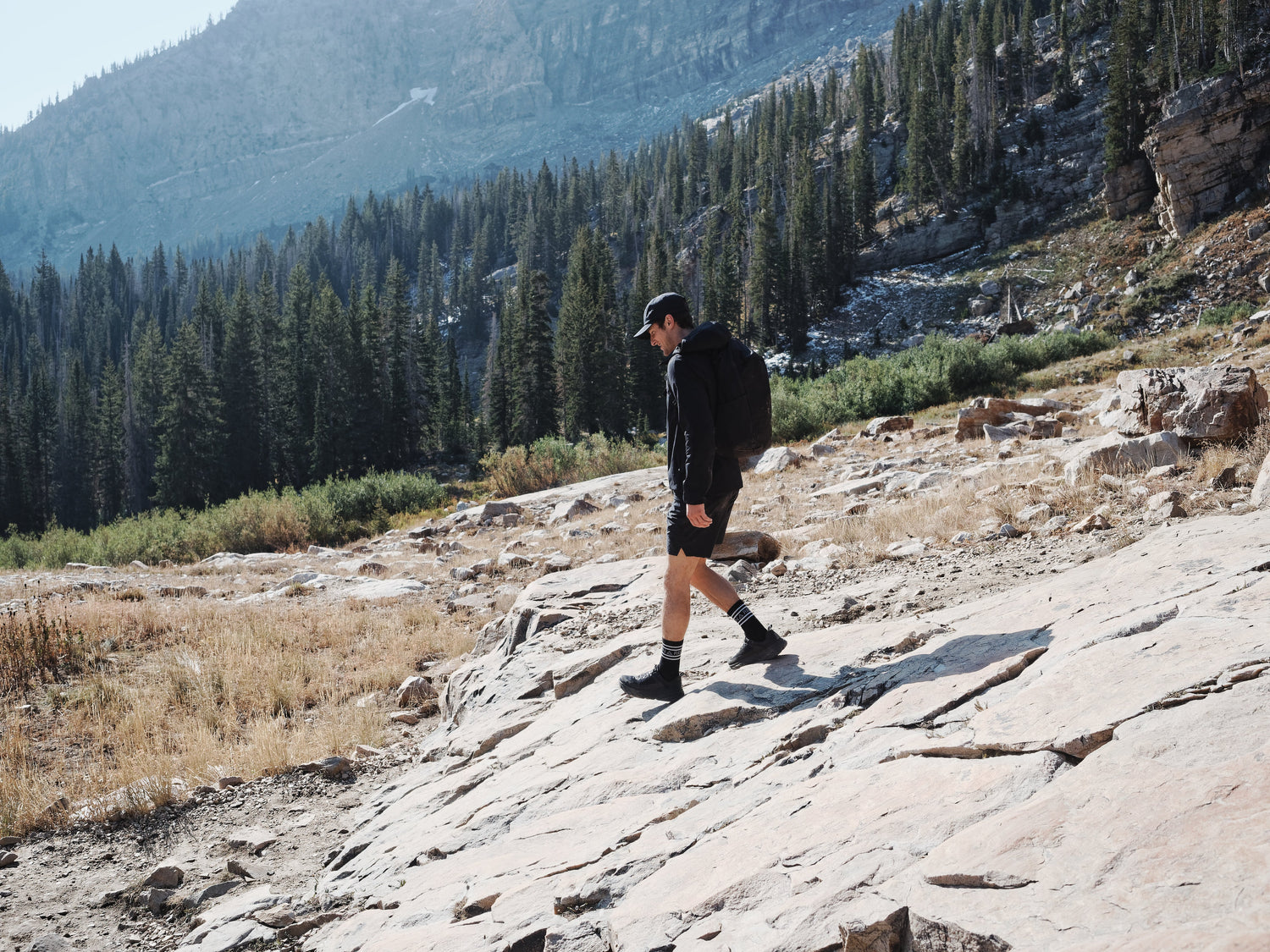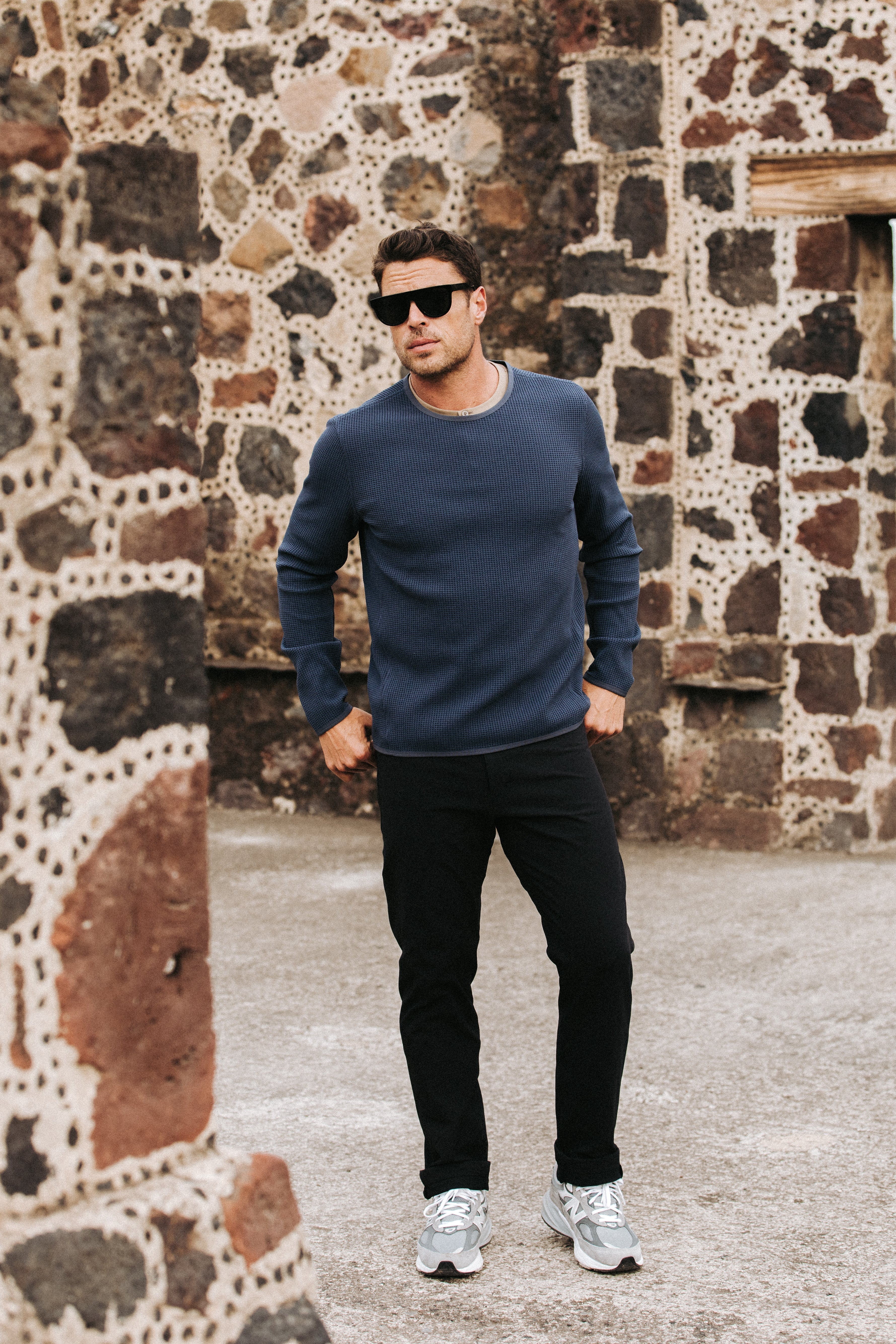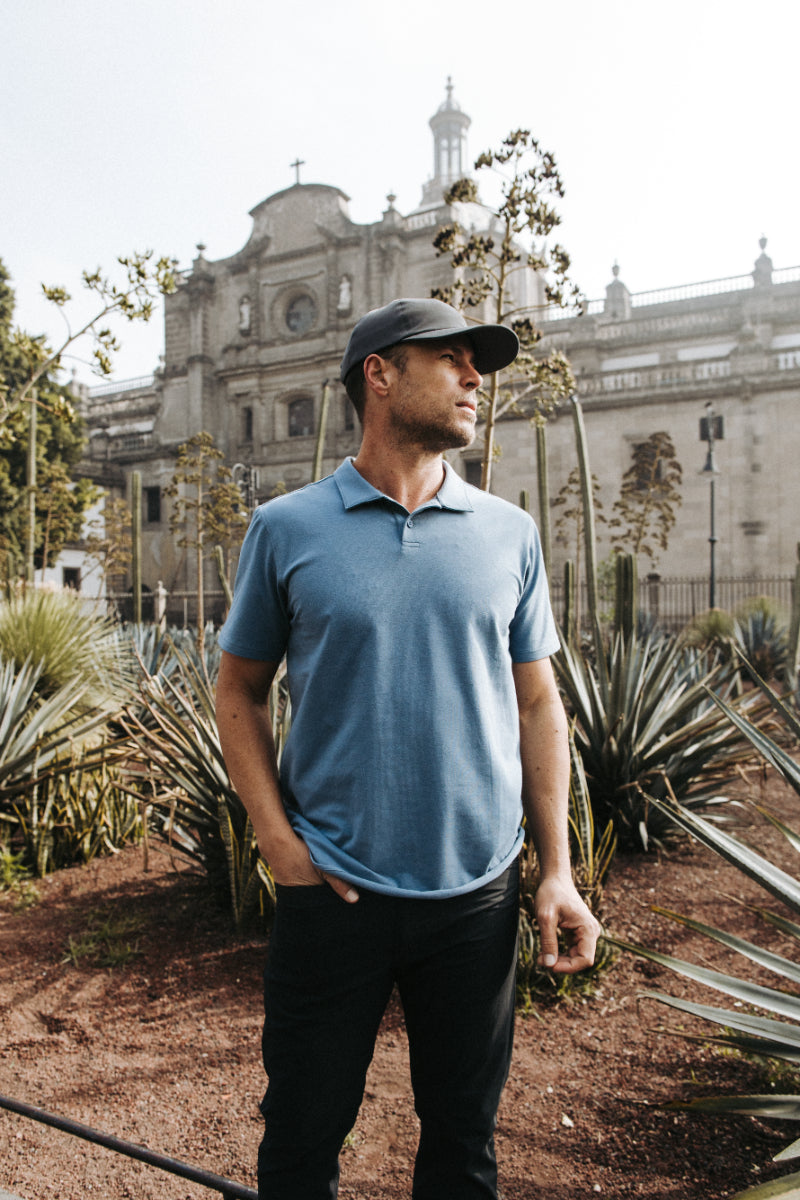We’ve all been there—standing in front of an open backpack, wondering if we really need that extra pair of socks or if we’re about to make the rookie mistake of overpacking (spoiler: we probably are). Packing for a backpacking trip is an art, a delicate balance between bringing the essentials and not hauling around a bag that makes you question your life choices at mile five. So, to save you from the dreaded "why did I bring this?" moment, we put together the ultimate backpacking checklist—tested, refined, and built for adventure.

Backpacking Essentials
Alright, now that we’ve collectively agreed to avoid the "why did I bring this?" meltdown, let’s talk essential backpacking gear—the non-negotiables, the tried-and-true, the stuff that separates a great trip from a survival documentary.
The Big Three (or Four, Depending on How You Roll) Backpacking Gear
-
Backpack (35-60L) – Fit matters.
Get a properly sized pack and test it fully loaded before your trip. Too small? You’ll have to strap stuff awkwardly on the outside. Too big? You’ll fill it with unnecessary junk. If you’re traveling light, the Voyager Travel35 Backpack is a great option for one-bag travelers—sleek, durable, and designed for efficiency. For winter hikes, when bulkier gear like insulated clothing and a warmer sleeping bag take up more space, a 50-60L pack is ideal. On summer or ultralight trips, a 35-45L pack is plenty, keeping weight low while ensuring airflow and comfort.
-
Tent / Shelter – Your emergency plan for bad weather.
A lightweight tent (Big Agnes Copper Spur, Nemo Hornet) is great for solo hikers, while hammocks with a rain fly (Eno, Hennessy Hammock) work well in warm climates. Check the forecast—nothing teaches you humility faster than a surprise rainstorm when you packed for a dry night. If you're camping in colder conditions, a four-season tent like the Hilleberg Akto or MSR Remote will handle snow loads and strong winds better. In warm-weather trekking, a mesh tent or bivy sack saves weight while maximizing airflow, keeping you cool and comfortable through the night. -
Sleeping Bag – Don’t trust “comfort” ratings—check the actual low temps.
A down or synthetic sleeping bag (REI Magma, Western Mountaineering, Therm-a-Rest Questar) rated 10°F lower than expected conditions ensures warmth without the risk of a miserable, shivering night. If weight is a concern, a high-quality quilt (Enlightened Equipment Revelation) can be a lighter alternative. Cold-weather adventurers should opt for a 0°F-rated bag and possibly add a liner for extra warmth, while summer hikers can get by with a lightweight quilt or even a breathable sleeping bag liner to stay cool without sacrificing comfort. -
Sleeping Pad – Insulation matters just as much as cushioning.
The ground saps heat fast, so pick a pad with a high R-value (Therm-a-Rest NeoAir XTherm, Nemo Tensor Insulated) if camping in cooler conditions. For budget-conscious hikers, the Nemo Switchback closed-cell foam pad is a durable, no-fail backup. In colder weather, an R-value of 4+ prevents body heat loss to the ground, keeping you warm through the night. For mild conditions, a lower R-value (2-3) pad will save weight while still providing the cushioning you need for a good night's sleep.

Tired, cold, and cranky is no way to enjoy the outdoors. Invest in a comfortable sleep system, test it before you go, and make sure you’re prepared for the actual conditions—not the ones you hope for.
Backpacking Clothes That Work
The right clothing can be the difference between an epic adventure and a miserable slog. Weather changes fast, sweat is inevitable, and comfort matters more than you think. Pack smart with breathable, durable layers that adapt to shifting conditions—you’ll thank yourself later.
-
Base Layers (Moisture-Wicking, Not Cotton)
Sweat and cold are a nasty combo, and cotton just makes it worse. Stick to merino or synthetic base layers like our StrongCore Merino Tee—breathable, odor-resistant, and perfect for multi-day wear without stinking up your tent.-
Seasonal Adaptation:
Winter calls for full-length base layers to trap heat and keep you warm such as StrongCore Merino Long Sleeve Shirt. Summer? Lightweight, breathable tees and shorts will keep air flowing and sweat in check.
-
Seasonal Adaptation:
-
Puffy Jacket / Fleece or Waffle Fabric
When temperatures drop, a solid insulated layer is your best friend. A down or synthetic puffy like AirLoft Hooded Jacket gives you warmth without bulk, while a fleece makes for a reliable mid-layer.-
Seasonal Adaptation:
For winter, a heavy-duty down jacket layering over a fleece or insulated sweater is the way to go. Summer hikers can get by with an ultralight waffle zip hoodie —just enough warmth for those crisp mornings and cool nights.
-
Seasonal Adaptation:
-
Rain Jacket
A drizzle can turn into a downpour in seconds. A real waterproof shell (not a glorified plastic poncho) like Meta Shell will keep you dry while blocking wind—without turning into a sweat trap. Look for pit zips for ventilation.-
Seasonal Adaptation:
Cold, wet hikes? A heavier hardshell with snow resistance is essential. Warmer weather? A lightweight, packable rain jacket saves weight but still gets the job done.
-
Seasonal Adaptation:
-
Hiking Pants / Shorts
You need something that moves with you, not against you. Stretchy, breathable options like our Evolution Pants give you flexibility on the trail while resisting dirt and water. Plus, they’re sleek enough for a post-hike beer without looking like you just crawled out of the woods.-
Seasonal Adaptation:
For colder months, softshell or fleece-lined pants keep you warm without overheating. In hot conditions, quick-dry shorts are your best bet for staying comfortable.
-
Seasonal Adaptation:
-
Hat / Gloves
Cold weather? You’ll regret not packing a beanie to trap heat and lightweight gloves (Black Diamond, Outdoor Research) to keep your fingers functional.-
Seasonal Adaptation:
For winter, go for thick, insulated gloves—waterproof if snow or rain is in the mix. Summer? A Western Rise Versa Hat is a game-changer, keeping the sun off your face and sweat out of your eyes.
-
Seasonal Adaptation:
-
Broken-In Hiking Shoes / Trail Runners
Nothing ruins a trip faster than blisters. Trail runners (Altra Lone Peak, Hoka Speedgoat) are great for lightweight comfort, while sturdy boots (Salomon, Danner) offer ankle support for rougher terrain. Whatever you choose, break them in before your trip—unless you enjoy foot torture.-
Seasonal Adaptation:
Heading out in winter? Go for insulated, waterproof boots with gaiters to keep snow and slush out. Summer trekking? Ditch waterproofing—breathable trail runners dry faster and prevent your feet from turning into sweaty, blistered messes.
-
Seasonal Adaptation:
-
Merino Wool Socks (x2-3 pairs)
Cotton socks are a disaster waiting to happen. Merino wool wicks sweat dries fast, and keeps blisters at bay. Two pairs for hiking, one for sleeping—rotate them to keep your feet happy.-
Seasonal Adaptation:
Cold conditions? Thicker socks with a liner will add warmth and prevent friction. Warmer hikes? Go for ultralight merino socks—they’ll keep your feet cool without overheating.
-
Seasonal Adaptation:
Nature doesn’t care about your comfort. Pack smart with breathable layers that handle sweat, cold, and rain—so you can focus on the adventure, not your misery. Stay dry, stay warm, stay blister-free.
Hydration & Cooking Essentials
Staying fueled and hydrated isn’t optional—it’s what keeps you moving. You need lightweight, high-calorie food and a solid water system that won’t fail you mid-trail. Here’s how to keep your body fueled and your water safe.
Hydration: Stay Ahead of Thirst
Dehydration sneaks up fast, and trust us—you don’t want to learn that the hard way. Make sure you have a reliable way to carry and treat water.
- Water Bottles / Hydration Bladder (2L minimum) – Smartwater bottles are lightweight and work with screw-on filters; hydration bladders are great for hands-free sipping.
-
Water Purification – No one wants Giardia, so treat everything:
- Sawyer Squeeze / Katadyn BeFree – Easy-to-use filters for solo hikers.
- Gravity Filters (Platypus, MSR Guardian) – Hands-free filtration for groups.
- Iodine Tablets / AquaMira Drops – Compact backup in case your filter fails.
Food: Pack Light, Eat Smart
After a long day of hiking, food is more than just fuel—it’s morale in a bag. Stick to high-calorie, easy-to-prepare meals that won’t weigh you down.
- Freeze-Dried Meals – Just add hot water for an instant meal (Mountain House, Good To-Go).
- Protein Bars, Trail Mix, & Jerky – Easy, no-cook snacks that keep you going.
- Tortillas + Peanut Butter / Cheese / Salami – A backpacker’s best friend.
-
Electrolytes (Liquid IV, Nuun, Gatorade Powder) – Prevents dehydration and muscle cramps.
Cooking Gear: Simple but Effective
You don’t need a full kitchen—just the right tools to heat water and keep cleanup minimal.
- Backpacking Stove (Jetboil, MSR Pocket Rocket) – Jetboil for speed, Pocket Rocket for versatility.
- Fuel Canister – Check your levels before you leave.
- Long Spoon / Spork – A must for eating straight from the bag.
- Ultralight Pot (750-900mL) – Big enough to boil water, small enough to pack easily.
- Lighter & Waterproof Matches – Because stoves don’t start themselves.
-
ADOT Grizzly Bear-Proof Food Bag – Store food properly without losing your snacks.

Test your stove and filter before the trip—trail malfunctions suck. Ditch plates, eat from the bag, and swap napkins for a microfiber cloth. Pack smart, eat well, and never underestimate the joy of a hot meal after a long day.
Navigation & Safety Backpacking Items
Having the right safety and navigation gear isn’t just about peace of mind—it’s about making sure you actually make it back.
- Headlamp + Extra Batteries – Your phone flashlight is a joke. A dedicated headlamp (Petzl, Black Diamond) keeps your hands free and your path lit. Carry extra batteries (or a rechargeable model with a power bank) because running out of light mid-hike is not the adventure you want.
- Map & Compass / GPS – Don’t trust just your phone battery. Paper maps and a basic compass don’t fail when your phone does. If you prefer GPS, download offline maps in Gaia GPS or AllTrails Pro so you can navigate even in dead zones.
- First Aid Kit – Blister care, painkillers, and emergency meds. Future-you will be grateful. Pack moleskin for blisters, ibuprofen for sore muscles, antihistamines for bug bites or allergies, and an emergency space blanket for unexpected cold snaps.
- Multi-Tool / Knife – For gear repairs, food prep, and feeling like an outdoor MacGyver. Whether it’s fixing a busted backpack strap, slicing through stubborn packaging, or cutting up a trail snack, a Leatherman or Victorinox knife can save the day.
- Trekking Poles – Knees are a finite resource. Protect them. Descents, rough terrain, and heavy packs wear down your joints fast. Collapsible poles (Black Diamond, Leki) reduce impact on knees and help with balance—you’ll be glad you brought them.
- A Small Sling Bag or Daypack - Not every part of your adventure requires hauling a full pack. Whether you're scrambling to a viewpoint, heading to town for supplies, or just want quick access to essentials, a compact bag is a game-changer. Our Tech Sling is a sleek, secure option for stashing your phone, map, snacks, and small gear. For those who need more space without the bulk, our Voyager™ RollTop15 Backpack offers versatility and weather resistance in a packable, minimalist design—ideal for shorter hikes, city excursions, or carrying the essentials while your big pack stays at camp.
Test your GPS and practice with your map & compass before you go. Keep first aid handy—digging for it in an emergency is the last thing you want. Trekking poles? Use them. Your knees will thank you. Smart packing isn’t about carrying more—it’s about carrying what matters.
Miscellaneous But Non-Negotiable
Backpacking means embracing the elements, but a little preparation goes a long way in keeping you comfortable (and functional) on the trail. Here’s what you don’t want to forget in your essentials list:
- Toilet Kit – Nature calls whether you’re ready or not. In many places, burying waste is required, and a lightweight trowel (like the Deuce of Spades) makes it easy to dig a proper cathole (at least 6-8 inches deep, 200 feet from water). In sensitive areas, pack out used TP in a sealed waste bag—it’s gross, but so is leaving it behind.
- Sunscreen & Bug Spray – Sunburn and mosquito bites are not the souvenirs you want. A reef-safe, sweat-resistant sunscreen (SPF 30+) keeps you from frying, while DEET-based or Picaridin bug spray keeps mosquitoes and ticks from making a meal out of you. For extreme bug zones, consider a bug net—your sanity will thank you.
- Backup Power Bank – Because your phone dying in the middle of nowhere isn’t fun. Even if you use airplane mode to save battery, GPS tracking, photos, and emergency calls drain power fast. A 10,000mAh+ power bank (Anker, Nitecore) gives you 2-3 full charges, ensuring you stay connected if needed. Opt for lightweight, fast-charging cables and multi-port charging solutions for more convenience.
- Plastic Bags and Waterproofing Solutions – Will keep gear dry when the weather turns nasty—because soaked clothes and a wet sleeping bag are pure misery.
- Emergency Repair Kits (duct tape, gear patches) – Can handle ripped tents, busted straps, and leaky sleeping pads, so small issues don’t turn into trip-ending disasters.

Optional But Totally Worth It Backpacking Items
Some things aren’t strictly necessary, but a few well-chosen extras can take your backpacking trip from "surviving" to "thriving." These small luxuries add comfort, convenience, and a little sanity when you're deep in the wilderness.
- Camp Shoes – Your feet deserve a break. After a long day of hiking, slipping into lightweight camp shoes (Crocs, Teva, Xero sandals) gives your feet room to breathe and doubles as backup footwear for river crossings.
- Compact Camp Chair – Because sitting on a rock gets old really fast. A lightweight, packable chair lets you relax by the fire instead of perching on uneven ground. Your back will thank you.
- Coffee Setup – Mornings in the wild hit differently with a real cup of coffee. A collapsible mug, instant coffee (Alpine Start, Starbucks Via), or a backpacking French press attachment makes it easy to get your caffeine fix without hauling a full coffee kit.
- Earplugs & Eye Mask – If you’re a light sleeper, this duo is a game-changer. Block out snoring tentmates, rustling critters, or that early sunrise so you can actually get some rest.
- Whistle or Airhorn – A must-have for safety. A simple whistle (Fox 40) can signal for help in an emergency, while an airhorn is useful in bear country or when hiking alone.
-
Book / Kindle – There’s something about reading in the wild that just hits differently. A Kindle is ultralight and holds multiple books, but if you’re old-school, a paperback you can swap or leave behind keeps things simple.
Staying prepared isn’t just about what you pack—it’s about how you pack and use it. A little planning, smart gear choices, and a few pro-packing tricks can make all the difference out there.
Pro Backpacking Tips from Experienced Backpackers
Backpacking isn’t about stuffing your pack to the brim—it’s about packing smart, staying comfortable, and avoiding mid-trail regrets. Whether it’s your first overnight trip or you’re leveling up to longer treks, a few key strategies can make all the difference. Here’s how to keep your pack light, your feet happy, and your gear dialed in.
- Borrow or Rent Gear First – Not sure if backpacking is your thing? Before dropping serious cash on high-end gear, rent or borrow essentials (REI, GearTrade, or local outfitters are great options). It’s a smart way to test the waters without financial regret.
- Lightweight Packing is Key – Your pack weight should stay under 25 lbs (before food & water) to keep your hike enjoyable. If it’s heavier, ditch non-essentials, opt for ultralight versions, and rethink “just-in-case” items.
-
Practice First – Don’t let your first night in the wild be a disaster. A short overnight trip close to home helps test your gear, comfort levels, and physical endurance. This is where you figure out if your sleeping pad actually works or if your pack rubs in all the wrong places.
Invest in Good Footwear – The wrong shoes can make or break a trip. Trail runners (Altra Lone Peak, Hoka Speedgoat) are preferred for their lightweight feel, while hiking boots (Salomon, La Sportiva, Danner) are better for heavy loads or rugged terrain. Always break them in first! - Layering is Essential – Weather shifts fast, and cotton is a rookie mistake (it traps moisture and stays wet). Stick to moisture-wicking base layers, an insulating mid-layer (fleece or puffy jacket), and a waterproof shell (Arc’teryx, Frogg Toggs for budget).
- Share Gear When Possible – If you're backpacking with others, split the weight—one stove, one tent, one bear canister. No need for everyone to carry duplicates when you can divide and conquer.
- Use Compression Bags or a Pack Liner – A wet sleeping bag is a nightmare. Keep everything dry with waterproof compression sacks or a simple trash compactor bag as a pack liner.
- Test Water Filters & Stoves Before the Trip – No one wants a broken filter when they’re thirsty or a non-functional stove when it’s dinner time. Do a dry run at home to avoid these mid-trail headaches.

Backpacking is about freedom—carrying just what you need and nothing you don’t. Pack smart, travel light, and trust your gear so you can focus on the adventure ahead. The less you carry, the more you gain. Wishing you an epic backpacking adventure!

